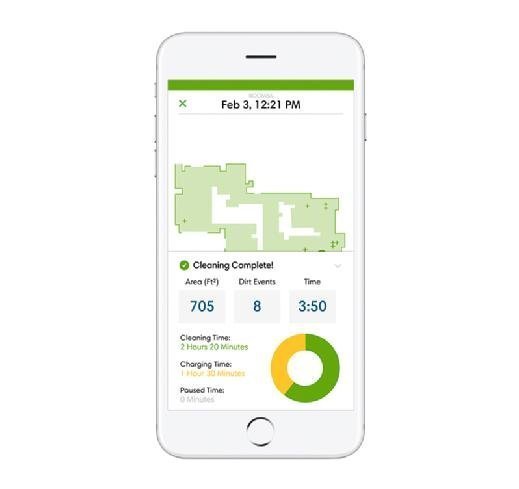The Roomba is an early use case for cloud robotics- Valutrics
Here’s a dirty little secret about the state of today’s smart home. Intelligent devices may indeed save a homeowner time, manual labor and money, but it will require Ph.D.-level tech skills to make that happen. At least that’s according to Chris Jones, the vice president of technology at iRobot, a consumer robot company in Bedford, Mass.
“The challenge [of the smart home] is it requires the consumer to essentially program a lot of sensors and devices in that home to deliver those experiences, something that’s beyond what the average consumer is going to want to do,” Jones said.
The company is aiming to clear that barrier with the help of its signature consumer product, the Roomba. The robot vacuum cleaner has undergone a significant transformation since its 2002 debut. Modern features include Wi-Fi connectivity, sensors and onboard computation, all of which are used to clean floors more efficiently. But those same features have turned a dumb machine into an autonomous mobile sensor platform, Jones explained, positioning it as a potential conductor for the smart home and providing an early use case for cloud robotics.
Roomba, post IoT-enabled
With the rollout of the 900 series model in 2015, the Roomba became a full-fledged member of the internet of things. A Wi-Fi enabled Roomba meant that customers could control the device with a mobile application. In its latest iteration, debuted in March, the Roomba is able to create a 2D blueprint of your home using sensors and onboard computation to keep track of where it’s been and how far away it is from its docking station. And that mapping prowess, Jones said, opens up a whole new career for the 15-year-old robot: a programmer for the smart home.
Jones used motion activated lighting as an example of where the Roomba can be of assistance. “If you want lighting that turns on when you’re in the room and off when you leave you, there’s still a burden on the consumer to logically program that,” he said. Not to mention programming rules that establish which motion sensor turns on which light.
With its map-building capabilities, the Roomba can automate some of that programming by identifying the location of the rooms in conjunction with their smart devices. “It’s easy then to automate the rules and say, ‘OK. I can see that motion sensor one is in the same room as lights five, six and seven, because I have a physical layout of the home,'” Jones said. “I can automate that process now.”

Cloud robotics is key
One of the underlying technologies that will enable the transition from autonomous vacuum cleaner to smart home orchestrator is cloud robotics. “It’s all about understanding how a physical robot can be enhanced or improved by leveraging resources that are available through some kind of a connected service,” Jones said.
The Roomba’s maps are sent to the cloud where they’re cleaned up and made presentable to customers. As they access additional processing power in the cloud, Roombas are an example of cloud robotics in action, according to Jones.
Other applications include accessing the cloud for additional data. Self-driving cars, for example, could connect to weather.com and factor weather data into their decisions. Jones said cloud robotics could also be used to enable a robot network, where data is collected by physical robots and disseminated to other robots through a cloud service. This example of cloud robotics is sometimes referred to as “fleet learning” — as in fast and across a fleet — because it enables a group of connected robots to automatically acquire new information from each other. If, say, a self-driving car came upon an unplanned traffic delay, it could share the information with other self-driving cars in the area, thereby diverting traffic. A fleet of robots could also collectively gather much larger data sets needed to advance the performance of machine learning algorithms than a single robot could.
But fleet learning and cloud robotics in general is still a fairly academic topic, according to Jones. The Roomba is an early example of a product priced for the consumer market that leverages the cutting-edge technology to open up a new source of revenue for iRobot. “The robots don’t have enormous amounts of processing or memory onboard the platform itself. So it makes sense for us to understand how we can leverage additional resources off of the robot hardware itself.”
